Category: Uncategorized
- Written by: admin
- Category: Uncategorized
- Published: July 13, 2025
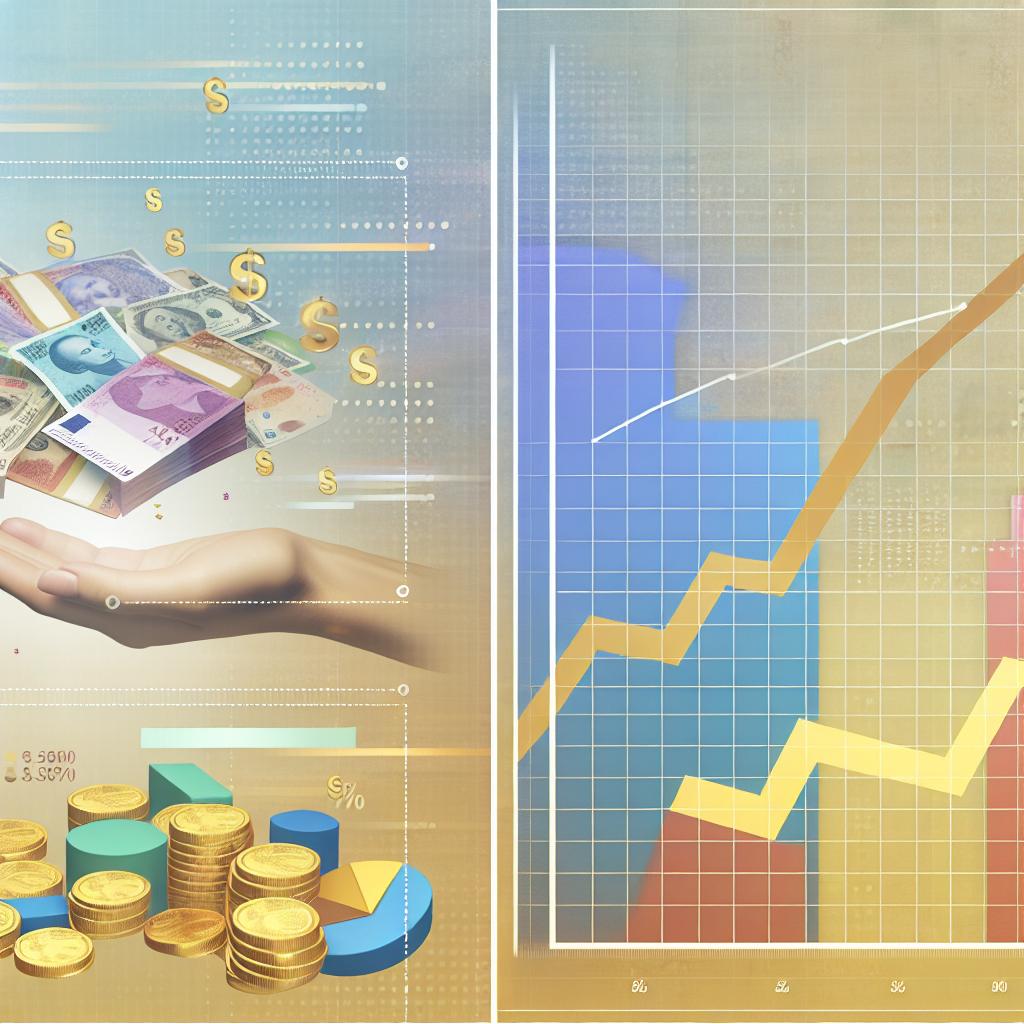
Understanding Purchasing Power
Purchasing power is a fundamental concept in economics that refers to the value of a currency expressed in terms of the quantity of goods or services that a single unit of money can purchase. This concept is essential for both individual economic decision-making and broader national economic planning. When analyzing purchasing power, understanding its dynamics can help in evaluating economic health and inform strategies for economic development.
In simple terms, purchasing power signifies how much you can buy with a specific amount of money. If an individual has high purchasing power, it means that with a fixed income or amount, they can afford more goods and services. On the other hand, when purchasing power decreases, each unit of currency buys fewer goods and services than before.
Factors Affecting Purchasing Power
Numerous factors can influence purchasing power. Recognizing these allows consumers, businesses, and policymakers to make sound economic decisions to maintain or enhance purchasing power over time.
Inflation
Inflation is perhaps the most critical factor affecting purchasing power. Inflation occurs when there is a general increase in the price level of goods and services in an economy over a period. With inflation, the real value of money decreases, meaning that each monetary unit buys fewer goods and services. For example, with an annual inflation rate of 3%, an item costing $100 today will likely cost $103 next year if prices rise in line with inflation. Therefore, without corresponding income increases, inflation erodes purchasing power over time.
Exchange Rates
Exchange rates play a crucial role, especially for consumers and businesses engaged in international trade. Exchange rates determine the value of one currency relative to another. A stronger domestic currency makes imported goods cheaper, effectively increasing purchasing power. Conversely, a weak currency purchasing foreign goods will buy less, thus reducing purchasing power. Exchange rate fluctuations can therefore have a significant impact on import prices and the cost of living.
Wage Levels
Wages are another pivotal factor in determining purchasing power. If wages grow at a rate that exceeds the inflation rate, individuals effectively have more purchasing power. Conversely, if wage growth lags behind inflation, consumers experience a decrease in purchasing power. Therefore, examining trends in wage levels relative to inflation provides insight into changes in real purchasing power.
Measuring Changes in Purchasing Power
To assess changes in purchasing power, economists and analysts use specific indices that track variations in price levels and cost structures over time.
Consumer Price Index (CPI)
The Consumer Price Index (CPI) is a widely recognized measure of price level changes and is frequently used to gauge inflation rates. The CPI reflects the average change over time in prices paid by urban consumers for a market basket of goods and services. By tracking the CPI, analysts can infer about shifts in purchasing power as it represents changes in the prices of essential items such as food, housing, and transportation.
Cost of Living Index
The Cost of Living Index provides a broader understanding of purchasing power by comparing the cost of maintaining a certain standard of living in different regions. It considers various factors, such as housing expenses, tax levels, and food costs, giving a more comprehensive view of purchasing power differences across locations. This index helps to account for regional disparities in living costs, which can significantly affect purchasing power.
Implications of Changing Purchasing Power
Fluctuations in purchasing power hold significant implications not just for consumers, but also for businesses and policymakers.
For Consumers
Individual consumers are immediately impacted by changes in purchasing power. A decrease implies that consumers must stretch their dollars further, potentially leading to adjustments in spending patterns. They may need to reduce discretionary spending, save less, or even resort to using their savings to maintain current living standards. Conversely, an increase in purchasing power allows for greater spending flexibility.
For Businesses
Businesses are directly affected by consumers’ purchasing power as it influences demand for their products and services. In response to a shift in purchasing power, companies might alter their pricing strategies, seek cost-effective inputs, or adjust product offerings to better align with consumer abilities and preferences. Firms must remain agile to sustain profitability in light of changing economic realities.
For Policymakers
Government policymakers play a critical role in managing and stabilizing purchasing power through monetary and fiscal policies. Actions such as modifying interest rates, adjusting taxation levels, or implementing subsidies can mitigate adverse effects on purchasing power. Such interventions are aimed at fostering an economically stable environment where purchasing power supports the overall economic welfare of citizens.
In conclusion, purchasing power serves as a vital economic indicator that is shaped by various dynamic factors like inflation, exchange rates, and wage levels. Understanding its intricacies is key to making strategic financial decisions for individuals and enables policymakers to enact initiatives to achieve economic stability and growth. By striving to preserve or increase purchasing power, stakeholders can contribute positively to the economic prosperity of society. Recognizing these dynamics is essential for all who want to navigate the economic landscape effectively.
- Written by: admin
- Category: Uncategorized
- Published: July 6, 2025
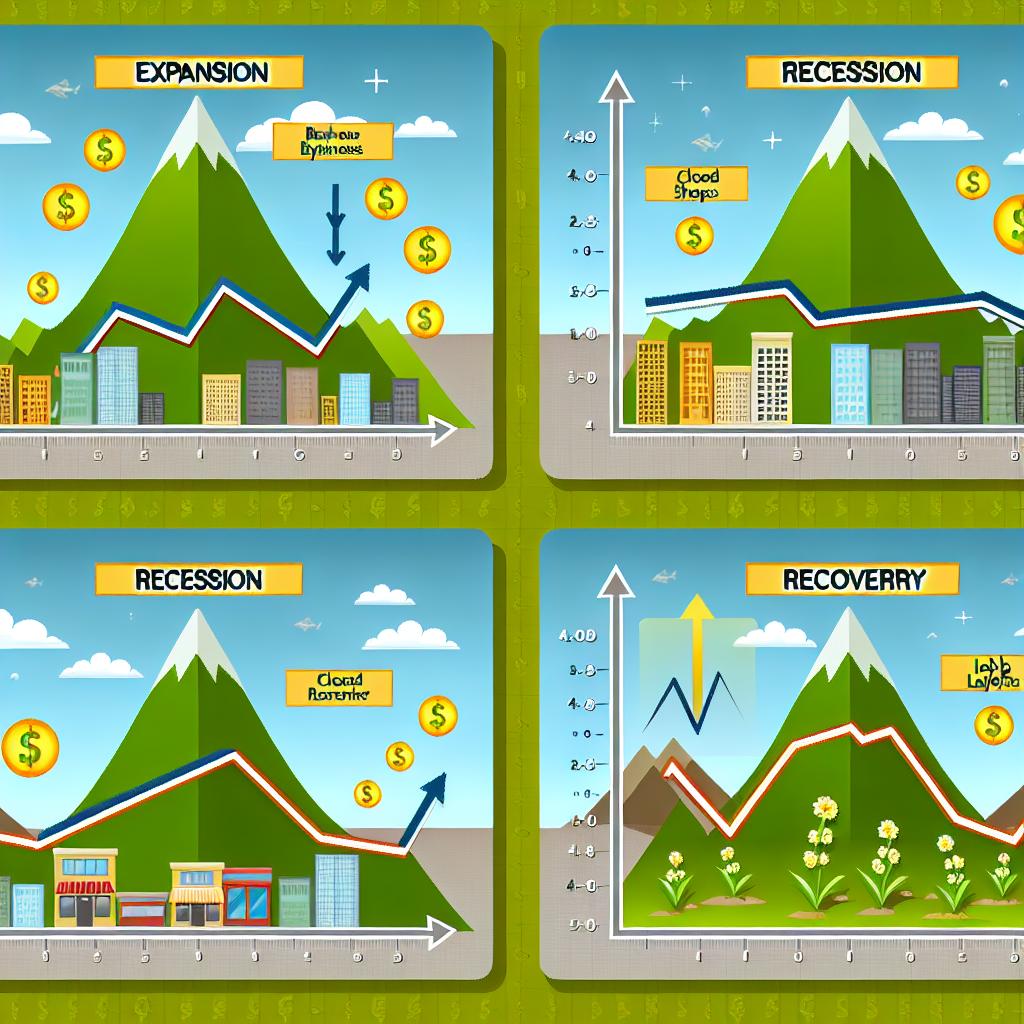
Understanding the Business Cycle
The business cycle remains a fundamental concept within the field of economics, encapsulating the recurrent phases of expansion and contraction in the economic activity of nations over time. These recurring cycles are typically segmented into four primary phases: expansion, peak, recession, and recovery. Each phase is marked by distinct characteristics and exerts different impacts across businesses, consumers, and policymakers.
Expansion
The expansion phase signifies a period in which economic activity witnesses sustained and steady growth. This phase is often regarded as synonymous with economic prosperity, marked by an upsurge in production and employment, along with heightened consumer spending. During expansion, businesses typically report increased profits, which often prompts investments in capital goods. Inflation levels, during the early stages of expansion, tend to remain moderate, providing a conducive environment for economic growth. High consumer confidence further fuels spending, thus facilitating the creation of new jobs and reduction in unemployment rates. The expansion phase is vital for enhancing economic vitality and sets the groundwork for lasting economic development.
Peak
Upon reaching the peak phase, the economy achieves its maximum level of activity. Economic performance metrics—such as Gross Domestic Product (GDP), employment rates, and production levels—achieve their pinnacle during this stage. However, it is also at the peak that inflationary pressures come to the forefront, compelling central banks to take precautionary measures. Such measures may include heightening interest rates to control inflation and stabilize prices. The peak serves as a precursor to a downturn, indicating the impending transition from economic growth to contraction.
Recession
The recession phase is typified by a tangible decline in economic activities across various sectors. Generally, a recession encompasses at least two consecutive quarters of negative GDP growth. Businesses often experience a slump in sales, leading to a cutback in both production and investment endeavors. During this phase, unemployment rates tend to rise as organizations curb hiring or lay off employees. This reduction in workforce often triggers a downturn in consumer confidence, leading to decreased consumer spending, further intensifying the economic downturn. In response, policymakers might initiate fiscal or monetary interventions to counteract the recession and reinvigorate economic growth.
Recovery
Gradually, the economy transitions into the recovery phase following a recession. Recovery is marked by a slow and steady resurgence in economic activities. Businesses begin to resume investments and start hiring once more, signaling an optimistic outlook towards future growth. Consumer spending begins to revive as market confidence is restored. Although the unemployment rate starts to decrease, it may take a while to realign fully to pre-recession levels. The recovery phase is critical, serving as a bridge that leads into the next cycle of economic expansion, thereby continuing the perpetual cycle of economic activity.
Implications for Stakeholders
Comprehending the intricacies of the business cycle is imperative for several stakeholders within the economic ecosystem:
Businesses: Understanding the cycle enables businesses to tailor strategies, such as expanding operations during growth periods and optimizing resources in times of recession.
Consumers: Awareness of economic cycles empowers consumers to make informed decisions concerning financial matters such as spending, saving, and investing.
Policymakers: By closely monitoring the business cycle, governments and central banks can implement economic policies aimed at cushioning adverse effects of cycles and fostering stable, long-term growth.
Conclusion
The business cycle is an inherent aspect of economic dynamics, illustrating the intricate interplay between factors governing economic operations. By grasping the various phases—expansion, peak, recession, and recovery—individuals and institutions can strategically navigate the economic landscape. Each phase offers opportunities and challenges that, when aptly managed, can lead to sustainable economic progress. Should you seek further insights on this pivotal economic concept, a multitude of financial education platforms provide detailed analyses and up-to-date economic forecasts to aid in enhancing economic literacy and planning.
- Written by: admin
- Category: Uncategorized
- Published: June 29, 2025
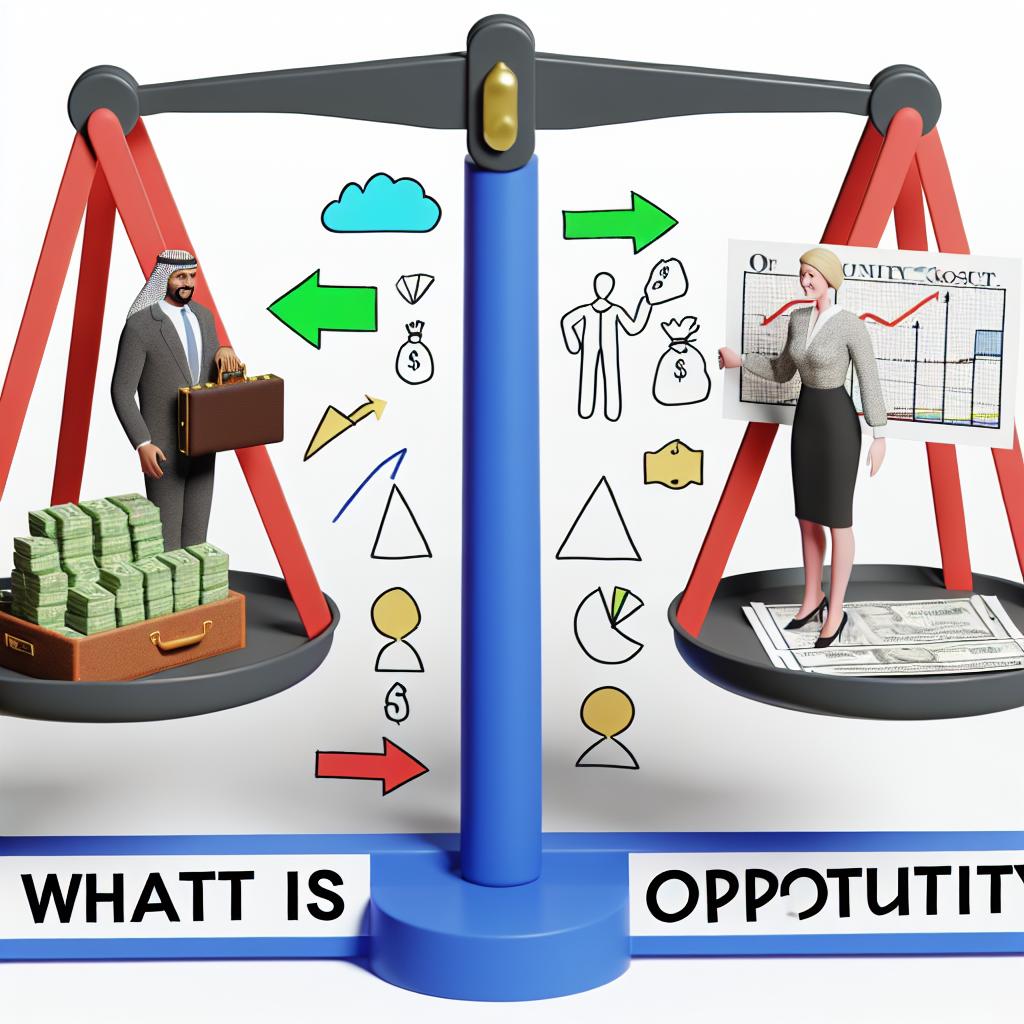
Understanding Opportunity Cost in Economics
In the realm of economics, the concept of opportunity cost is a pivotal element in decision-making processes. It represents the benefits or value one misses out on when choosing one alternative over another. Understanding opportunity cost is essential for economic agents, including individuals, businesses, and governments, as it aids in making informed choices.
Defining Opportunity Cost
Opportunity cost can be defined as the value of the next best alternative foregone when a decision is made. It is not just about financial costs; instead, it encompasses any kind of profit, benefits, or value that one forgoes. Unlike explicit costs, which involve direct monetary transactions, opportunity cost involves the evaluation of all available alternatives to assess the trade-offs.
The Importance in Resource Allocation
In economics, resources are often limited, and thus, the decision on how to allocate them effectively depends heavily on understanding opportunity cost. For instance, if a company decides to spend resources on developing a new product rather than improving an existing one, the opportunity cost is the potential profit it might have earned from enhancing the current product line. This concept extends beyond financial returns, covering factors like time, labor, and expertise, which are crucial for optimizing resource allocation.
Applications in Personal Decisions
On an individual level, opportunity cost plays a crucial role in various personal decisions. For example, choosing to spend money on a vacation means those funds cannot be invested or spent on other goods and services. Similarly, pursuing further education may involve the opportunity cost of lost income during that time period. More broadly, when individuals decide how to spend their time, such as choosing between leisure activities and part-time work, they are inherently considering the opportunity cost of their choices.
Examples in Business Context
Businesses frequently face scenarios where understanding opportunity cost can significantly impact their strategic decisions:
Investment Decisions: When a company decides to invest in one project over another, the foregone profits from the rejected project(s) become the opportunity cost. This requires evaluating potential returns and associated risks. For instance, a firm might choose to expand its manufacturing capacity instead of investing in new technology. The future benefits of the technological investment represent the opportunity cost of this decision.
Production Choices: Firms often need to decide which products to produce with their limited resources. The opportunity cost is the value of the products that are not produced. For example, if a factory allocates its resources to manufacture laptops instead of smartphones, the profits from unproduced smartphones constitute the opportunity cost.
The Role in Government Policy
Governments also must consider opportunity costs when allocating budgets across various sectors such as healthcare, education, and defense. A decision to allocate more funds to infrastructure might result in an opportunity cost of not enhancing healthcare services. In policy-making, understanding these trade-offs assists in crafting policies that balance societal needs with available resources.
Socio-Economic Implications
Opportunity cost doesn’t only affect direct economic decisions; it has broader implications on socio-economic planning. By recognizing opportunity costs, policymakers can prioritize sectors that promise the greatest aggregate benefit to society. For example, investing in education might lead to long-term economic growth, but the opportunity cost might be immediate infrastructure developments.
Limitations of Opportunity Cost
While opportunity cost is a valuable concept, it does have limitations due to subjective valuation and the challenge of measuring intangible and future benefits accurately. Estimations can be complex, leading to potential inaccuracies in decision-making frameworks. Moreover, opportunity costs are often only apparent with hindsight, complicating accurate predictions at the moment a decision is made.
Conclusion
Understanding opportunity cost is crucial for making rational and informed economic decisions. Whether it’s about personal budgeting or corporate investment, acknowledging what is sacrificed in favor of a chosen path enables better strategic planning. To further grasp opportunity cost concepts, explore more resources from trusted economic sites like Investopedia or The Economic Times.
By integrating opportunity cost analysis into decision-making processes, individuals and organizations can enhance their capacity to make choices that optimize their available resources and maximize potential benefits. Opportunity cost urges decision-makers to think critically about scarcity and prioritization, ultimately fostering a more efficient allocation of resources at every level, from personal finance to global economic policy.
To deepen your understanding of opportunity cost and its profound implications on decision-making, continuing education in economic theory and principles is valuable. Many universities and online platforms offer comprehensive courses on this subject, laying a solid groundwork for mastering economic strategy. By equipping themselves with this knowledge, individuals can navigate complex economic landscapes with greater confidence and insight, ensuring that their decisions align with long-term objectives.
Indeed, taking time to reflect on the less visible costs of our choices encourages a more nuanced perspective on economic decisions. This recognition goes beyond simple cost-benefit analyses, urging a broader view that considers not just immediate gains but also long-term impacts and opportunities missed. Through consistent practice and incorporation into strategic planning, the concept of opportunity cost can transform into an invaluable tool in both personal and professional arenas. It provokes deeper, more informed thinking, ultimately leading to outcomes that better serve the growth and sustainability aspirations of all economic participants.
- Written by: admin
- Category: Uncategorized
- Published: June 22, 2025

The Role of Productivity in Economic Growth
Productivity is a critical factor in understanding economic growth. The connection between productivity and economic growth is well-established within economic theory, as increased productivity is often synonymous with a more robust and resilient economy. In its simplest form, productivity measures how efficiently production inputs, such as labor and capital, are utilized to produce a given level of output. An exploration of this concept provides profound insights into how economies can grow and develop over time.
Understanding Productivity
Productivity can be defined as the ratio of output to input. It serves as an essential indicator of efficiency, reflecting how well resources are utilized within an economy. This metric is crucial for businesses, policymakers, and economists because it provides insight into the functioning and potential growth of an economy. When productivity increases, it often indicates that more goods and services are being produced from the same amount of resources, subsequently leading to economic growth.
Productivity is not just about producing more goods with the same resources; it is also about improving quality. When businesses become more productive, they can invest resources in enhancing the quality of their products and services. This dual focus on quantity and quality can drive consumer satisfaction and further fuel economic growth.
Why Productivity Matters for Economic Growth
Increases in productivity are crucial for sustaining long-term economic growth. Rising productivity allows economies to produce more goods and services without a proportional increase in the input of labor and capital. This results in several economic benefits:
Enhanced Living Standards: As productivity grows, so too do wages and the standard of living. Businesses can afford to pay more when they generate higher outputs with the same input costs. Increased wages result in higher consumer spending, contributing to further economic expansion.
Increased Competitiveness: Economies that demonstrate high productivity levels can more effectively compete in the global market. This competitive advantage can lead to a greater share of international markets and increased export revenues. By being able to produce at lower costs or higher qualities, businesses can expand their market reach and economic influence.
Innovation and Technological Advancements: High productivity often correlates with innovation. Businesses and economies that engage in research and development can improve their processes and technologies, thereby enhancing productivity further. The relationship between innovation and productivity is cyclical—innovation leads to productivity gains, which fund further research and development.
The Mechanisms of Productivity Growth
Several important mechanisms enhance productivity:
Technology and Innovation: Advances in technology, such as automation and digitalization, directly contribute to productivity gains by allowing for more efficient production processes. Companies that invest in cutting-edge technologies often find themselves at the forefront of their industries, benefiting from reduced costs and increased production speeds.
Human Capital Improvements: Education and training play crucial roles in increasing the skill levels of the workforce. A well-educated workforce is more capable of innovating and adapting to new technologies, improving the overall ability to contribute effectively to the production process. Investment in human capital is, therefore, a key component of national and business strategies for boosting productivity.
Efficient Resource Allocation: Proper allocation of resources ensures that capital, labor, and materials are used where they are most effective, minimizing waste and maximizing output. Economies that prioritize efficient resource use can achieve significant productivity improvements, contributing to sustainable growth.
Challenges and Considerations
While productivity growth is a fundamental component of economic development, it is not without its challenges. One significant issue is that technological advances can lead to disruptions in the labor market, necessitating policy interventions to address potential unemployment or underemployment. As automation and artificial intelligence replace certain jobs, economies must transition workers into new roles and industries.
Another challenge lies in the measurement of productivity, especially in service-oriented economies where outputs are not always tangible. Measuring productivity in sectors like healthcare, education, or creative industries can be complex, as quality improvements and consumer satisfaction must be considered alongside raw output figures.
Moreover, environmental sustainability poses a challenge. Increasing productivity must be balanced with ecological considerations to ensure long-term economic health without depleting natural resources. Policymakers must craft strategies that encourage green technologies and sustainable practices.
Conclusion
Understanding the importance of productivity in economic growth reveals that strategies to improve productivity are crucial for policymakers and businesses alike. Investing in technological innovation, education, and efficient resource management can potentiate a cycle of sustained economic prosperity. Strategies might include policies to support lifelong learning, incentives for research and development, and frameworks that encourage smart and sustainable resource use.
Therefore, productivity remains a pivotal focus for driving economic advancement and improving living standards worldwide. Addressing the challenges associated with productivity growth requires coordinated efforts across various sectors and disciplines, ensuring that economies can enjoy the benefits of higher productivity without the associated drawbacks. By doing so, nations can achieve robust economic growth that is inclusive, sustainable, and resilient in face of global challenges. For more insights on economic growth strategies, visit this resource.
- Written by: admin
- Category: Uncategorized
- Published: June 15, 2025

Understanding Trade Surplus and Trade Deficit
A country’s economic health is often gauged by its balance of trade, which measures the difference between the value of its exports and imports. Two critical concepts in this context are trade surplus and trade deficit.
What is a Trade Surplus?
A trade surplus occurs when the value of a country’s exports exceeds the value of its imports over a given period. This surplus indicates that the country is selling more goods and services to foreign countries than it is purchasing from them. A trade surplus can be seen as a sign of economic strength, as it suggests that the global demand for the country’s goods or services is strong.
Benefits of a Trade Surplus
By maintaining a trade surplus, a country might increase its foreign currency reserves, enhance the global competitiveness of its industries, and potentially strengthen its currency. Countries often aim for a trade surplus to encourage industrial growth and job creation.
Increase in Foreign Currency Reserves
One substantial advantage of having a trade surplus is the potential increase in foreign currency reserves. When a nation exports more than it imports, it typically receives foreign currencies in exchange for its goods and services. These currencies can then be used to stabilize the country’s own currency, manage inflation, and finance imports of essential goods that are not produced domestically. The accumulation of foreign reserves provides a financial cushion that can be advantageous in times of economic uncertainty.
Enhancement of Industry Competitiveness
Another significant benefit of a trade surplus is the enhanced competitiveness of national industries on the global stage. When a country’s products are in demand internationally, it often drives innovation and efficiency as businesses strive to maintain or increase market share. This push for better quality products or more efficient production processes can lead to a more robust national economy and greater industrial growth over time.
Potential Strengthening of Currency
A sustained trade surplus may lead to an appreciation of the national currency. As demand for the country’s exports increases, foreign buyers need the local currency to pay for these goods, thereby increasing its value. A stronger currency makes imports cheaper, benefiting consumers and businesses that rely on imported goods. However, it can also pose challenges for exporters, as their goods may become relatively more expensive for foreign buyers.
What is a Trade Deficit?
In contrast, a trade deficit happens when the value of a country’s imports exceeds the value of its exports. This means that the country is buying more from other countries than it is selling to them. While sometimes perceived negatively, a trade deficit can also suggest a robust consumer demand within a country.
Implications of a Trade Deficit
Trade deficits can have multiple implications. On the one hand, they may indicate a growing economy with strong consumer purchasing power. On the other hand, persistent trade deficits might signal competitive weaknesses and could lead to increased foreign debt if funded through borrowing.
Indicator of Strong Consumer Demand
One interpretation of a trade deficit is that it reflects buoyant consumer demand, as citizens or businesses buy more goods than the country produces. This dynamic can be beneficial, particularly in economies where domestic production is not sufficient to satisfy consumer demand. It suggests that the country’s residents have the financial means to purchase goods from abroad, supporting a high standard of living and diverse market offerings.
Potential Drawbacks of a Persistent Trade Deficit
Despite the potential positives, persistent trade deficits can signal underlying economic issues. Over time, relying heavily on imports can indicate that domestic industries are not competitive or innovative enough to meet market demands. This dependence on foreign goods and services might create vulnerabilities, especially if it leads to significant borrowing from other countries. The accrued debt can burden future generations, impacting socioeconomic planning and development efforts.
Trade Balance and Economic Policies
The balance of trade, whether a surplus or deficit, often influences a country’s economic policies. Policymakers may implement measures to adjust the balance, such as tariffs to protect domestic industries, or subsidies to boost exports. However, such measures can lead to international trade tensions.
Tariffs and Trade Protection
One method countries use to address trade imbalances is the application of tariffs on imported goods. Tariffs increase the cost of foreign products, making them less competitive compared to local production. This approach seeks to protect domestic industries from international competition, fostering growth and job creation within the country’s borders.
Subsidies and Export Promotion
Another strategy involves subsidies aimed at promoting exports. By offering financial advantages to key industries, governments strive to make their domestic goods and services more appealing in international markets. Increased exports can help narrow a trade deficit or contribute to expanding a trade surplus by enhancing the competitive edge of national enterprises.
Impacts on International Trade Relations
While such policies can adjust trade balances, they may also generate friction between countries. Tariffs, for instance, can lead to retaliatory measures, sparking trade disputes. Similarly, subsidies might be perceived as unfair competition, leading to grievances in international forums. These complexities underscore the delicate nature of trade negotiations and the importance of cooperation in achieving mutually beneficial outcomes.
Conclusion
Both trade surpluses and trade deficits have distinct impacts on a nation’s economy. While a surplus can signify strong international demand, a deficit may reflect dynamic domestic consumption. Understanding these concepts helps in analyzing a country’s economic strategy and its implications for global trade dynamics. In essence, a nuanced view of trade balances can provide deeper insights into the economic landscape, enabling policymakers and businesses to make informed decisions in an interconnected world. Such insight is crucial in crafting strategies that safeguard national interests while fostering international collaboration and stability.
- Written by: admin
- Category: Uncategorized
- Published: June 8, 2025
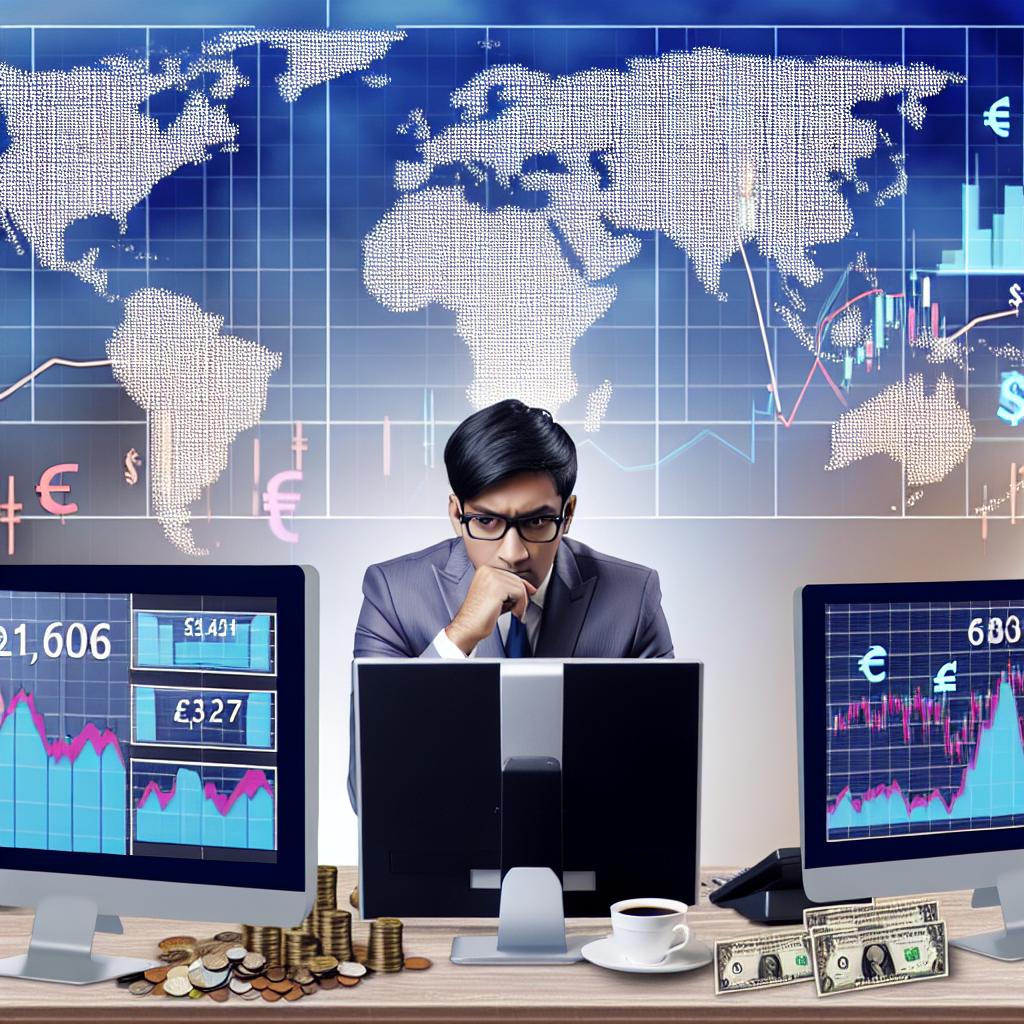
Introduction to Exchange Rates
Exchange rates serve as a pivotal element in the realm of economics and finance, influencing how currencies are exchanged on the global stage. At their core, exchange rates dictate the value of one currency in terms of another, playing an integral role in international trade, investment, and travel. A comprehensive understanding of exchange rates necessitates an exploration of the reasons behind their fluctuations and their broader impact on global economies.
What Influences Exchange Rates?
The dynamics of exchange rates are multifaceted and are swayed by various economic indicators and external factors. Among the most significant influences are interest rates, inflation, and a country’s economic stability.
Interest rates are crucial as they directly affect how attractive a currency is to investors. Countries boasting higher interest rates tend to draw increased foreign capital, as investors seek better returns on their investments, leading to an appreciation of that country’s currency. Conversely, nations with lower interest rates may see their currency value decline as investors look elsewhere for better returns.
Inflation also plays a critical role. When a country experiences high inflation, its currency typically depreciates because inflation diminishes purchasing power. People and businesses would need more of that currency to buy the same goods and services, causing the currency to lose value on the international stage.
Economic Stability and Confidence
Economic stability and investor confidence are significant factors in determining the valuation of a country’s currency. A nation enjoying political stability and robust economic performance is likely to inspire confidence among investors, potentially leading to currency strength. On the other hand, political turmoil or economic challenges can deter investment, causing a currency to weaken. Thus, confidence and perception can materially affect currency value beyond mere statistical measurements.
Supply and Demand Dynamics
The law of supply and demand is a fundamental principle when it comes to foreign exchange markets. The value of a currency is largely dictated by its demand relative to its supply. An increase in demand for a particular currency, driven by factors such as attractive interest rates or a booming export sector, often results in an appreciation of that currency.
Role of Central Banks
Central banks wield considerable influence over exchange rates using monetary policy and direct interventions in foreign exchange markets. They may opt to buy or sell their own currency to achieve desired economic objectives, such as controlling inflation or boosting exports. Such interventions can have immediate effects and are often part of broader policy strategies aimed at maintaining or adjusting economic equilibrium.
The Impact of Speculation
The foreign exchange market is highly susceptible to speculation, where traders and investors act based on their expectations of future currency movements. This speculative activity can introduce considerable volatility into the market as participants react to anticipated economic changes, such as shifts in monetary policy.
Long-term Valuation
While speculation can drive short-term fluctuations, long-term currency valuation relies more heavily on fundamental economic factors. GDP growth, productivity improvements, and the balance of trade are key indicators that analysts consider when evaluating a currency’s longer-term prospects. Over time, these stable indicators tend to provide a more reliable foundation for assessing currency strength.
Effects on International Trade
Exchange rates significantly influence international trade dynamics. A strong national currency can render a country’s exports more expensive for foreign buyers, potentially leading to a trade deficit as exports dwindle. Conversely, a weaker currency can render exports cheaper and imports more costly, potentially fostering a trade surplus. Consequently, nations must carefully manage their exchange rates to maintain favorable trade conditions.
Impact on Consumers and Businesses
The ripples of exchange rate fluctuations extend to consumers and businesses engaged in international commerce. For consumers, exchange rates directly impact the cost of imported goods and travel expenses. A stronger domestic currency generally means cheaper overseas travel and imported products.
Businesses, particularly those trading internationally, face the challenge of managing exchange rate risk, which refers to the potential for financial loss due to unfavorable currency movements. To mitigate this risk, companies often employ hedging strategies, such as using financial contracts to lock in exchange rates, safeguarding against unexpected shifts.
Tools for Understanding Exchange Rates
For those interested in understanding exchange rates more deeply, an array of online resources and analytical tools are available. Financial websites provide users access to real-time exchange rate data, allowing them to monitor changes as they happen. Furthermore, these platforms often offer economic analyses and forecasts, providing insight into potential future movements.
To gain more thorough expertise, individuals may explore publications from renowned financial institutions and international economic organizations. These resources delve into the intricacies of currency valuation and foreign exchange markets with significant depth.
Conclusion
A solid grasp of exchange rates and currency valuation is indispensable for anyone participating in global markets—be they a consumer, investor, or business owner. This complex subject encompasses a variety of factors, ranging from macroeconomic indicators to market psychology and government interventions. By understanding these dynamics, individuals and businesses can better navigate the complexities of the international financial landscape, making more informed decisions and adapting to an ever-changing economic environment.
- Written by: admin
- Category: Uncategorized
- Published: June 1, 2025
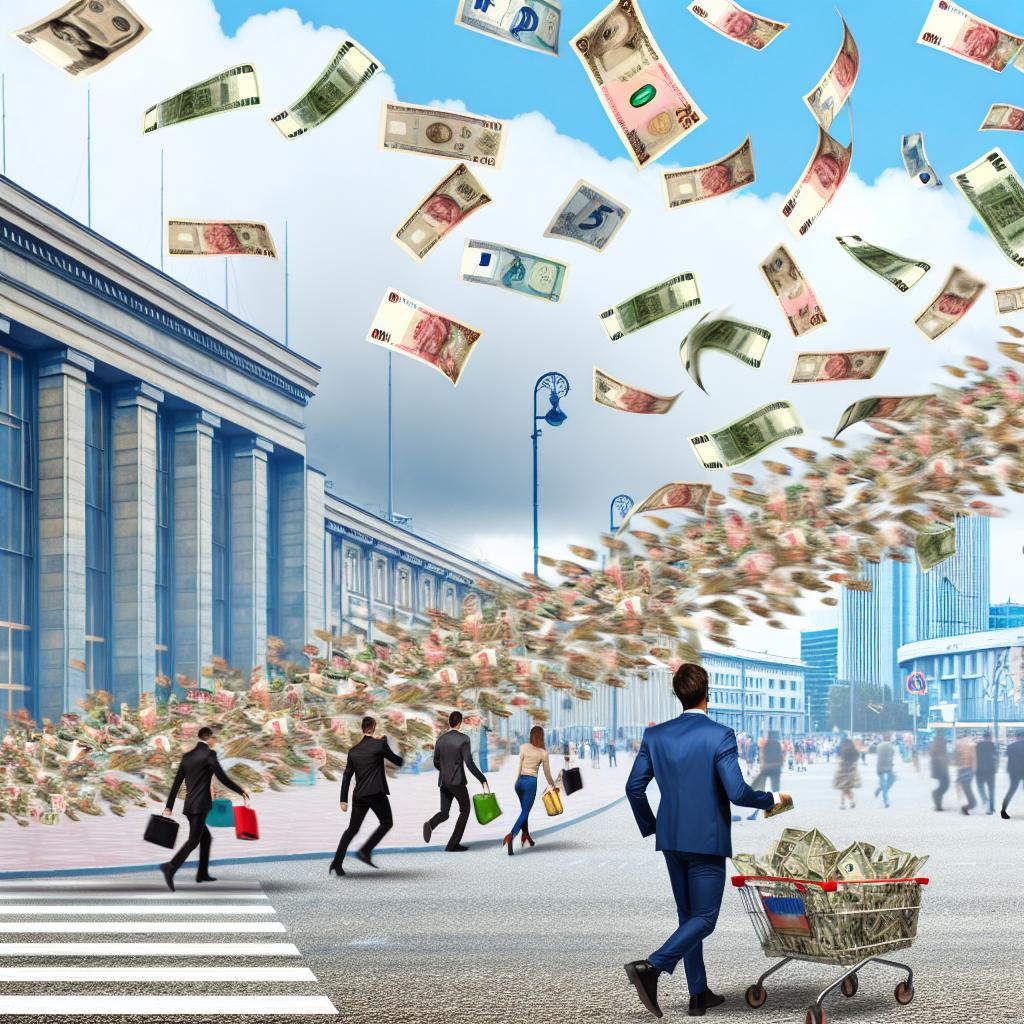
Understanding Hyperinflation
Hyperinflation represents an extreme and often alarming phase of inflation characterized by an unusually rapid escalation of prices in an economy over a brief period. When such an inflationary surge occurs, the inflation rate exponentially surpasses typical levels, escalating beyond 50% per month or reaching over 1,000% annually. This swift and rampant inflation severely erodes the purchasing power of the currency, leading to widespread economic implications.
Causes of Hyperinflation
Hyperinflation is generally triggered by a variety of interrelated factors, predominantly involving the excessive expansion of the money supply without underlying economic growth. When a government opts to print more currency to bridge its fiscal deficits or fund expenditures without a proportionate rise in goods and services, the currency’s value diminishes. Here, we delve deeper into the principal causes:
Loss of Confidence in the Currency: One of the critical precursors to hyperinflation is the erosion of trust among the populace in the stability and value of their currency. When faith in the currency wanes, individuals and businesses become less inclined to retain it, instead seeking to convert their holdings into more stable assets or foreign currencies. This rush to ‘dump’ the currency further accelerates its devaluation.
Political Instability: Hyperinflation often coincides with periods of political turbulence. In such scenarios, governments might resort to excessive money printing as a quick fix to address immediate financial obligations or to fund populist measures aimed at quelling dissent. Unfortunately, while this might provide short-term relief, it typically exacerbates the inflationary situation, fuelling further currency depreciation.
Economic Shocks: Significant and sudden economic shocks, such as wars, revolutions, or natural disasters, can drastically curb an economy’s capacity to produce and supply goods. These disruptions lead to shortages that, when combined with an inflated money supply, can spiral into hyperinflation. The diminished production capacity means fewer goods chasing more money, inevitably inflating prices.
Historical Examples
Although hyperinflation is relatively rare, history offers poignant lessons through several striking examples that underscore the destructive power of unrestrained price surges:
Germany in the 1920s: The post-World War I era was a tumultuous time for Germany, grappling with the economic aftermath of the Treaty of Versailles. The onerous reparations payments, compounded by a need to stimulate growth within a battered economy, led the Weimar government to print more money. This decision inadvertently triggered hyperinflation, reaching dramatic levels where prices doubled almost daily at its height, causing immense social and economic challenges.
Zimbabwe in the Late 2000s: Zimbabwe’s hyperinflationary crisis became a textbook example of economic collapse. The catalyst was a series of contentious land reforms coupled with a significant decline in agricultural production. In a desperate attempt to sustain the economy, the government printed money recklessly, culminating in an astronomical inflation rate that reportedly peaked at 89.7 sextillion percent per month. The consequences were catastrophic, leading to severe poverty and the collapse of the country’s financial system.
Venezuela in the 2010s: The hyperinflation experienced by Venezuela in recent years stemmed largely from weak economic policies and a drastic drop in global oil prices, heavily affecting the country’s oil-dependent economy. Government mismanagement paired with persistent monetary expansion led to hyperinflation, drastically reducing purchasing power and causing widespread socioeconomic disruption. The decline in basic living standards was compounded by shortages of essential goods and services.
Consequences of Hyperinflation
The onset of hyperinflation signals profound disruption within an economy, with pervasive and multifaceted consequences. Its impacts are wide-ranging and typically involve:
Erosion of Savings: Hyperinflation rapidly dilutes the value of accumulated savings. Both individual savers and financial institutions find their reserves diminishing in real terms, eroding wealth and destabilizing banking systems.
Reduction in Purchasing Power: Hyperinflation creates a scenario whereby wages and salaries fail to keep pace with soaring prices. Consequently, people find their standard of living drastically reduced as basic goods and services become unaffordable, accentuating economic inequality and societal distress.
Market Instability: With prices changing rapidly and unpredictably, market conditions become volatile. Businesses struggle to plan and operate effectively, often leading to supply chain disruptions and shortages. This instability not only constrains economic growth but also breeds an environment where speculative behaviors can thrive.
Barter Economies: As hyperinflation devalues the local currency, trust and utility in money as a medium of exchange decline. People revert to bartering—trading goods and services directly—as a more reliable means of transaction. While barter might offer a temporary solution for some, it leads to inefficiencies and highlights the breakdown of the formal monetary system.
For those interested in exploring the intricate dynamics of hyperinflation and its broader implications on global economies, extensive resources and scholarly investigations are accessible. Academic publications and research institutions frequently offer comprehensive analyses and elucidations of historical instances of hyperinflation, providing deeper insights into its systemic repercussions and preventive strategies.
Conclusion
Hyperinflation, though not frequently encountered, remains a perilous economic phenomenon due to its potential to wreak havoc on economies and societies. Comprehending its underpinning causes and far-reaching consequences is crucial for economists, policymakers, and the public alike. By identifying emerging signs of monetary instability and implementing sound economic policies, it is possible to forestall hyperinflationary cycles and mitigate their impact, safeguarding regional and global economic stability.
- Written by: admin
- Category: Uncategorized
- Published: May 25, 2025
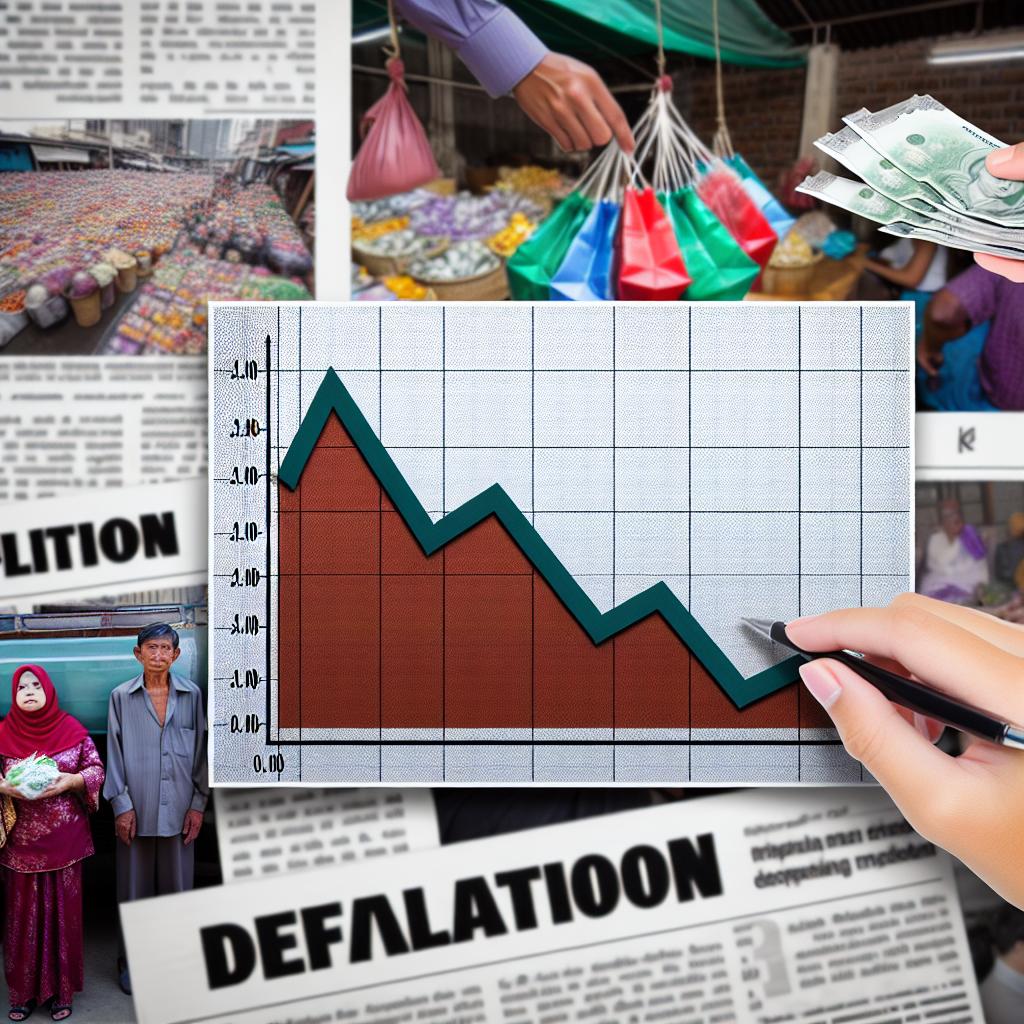
Understanding Deflation
Deflation is a significant economic condition that denotes a general decline in the prices of goods and services across an economy. It emerges when the inflation rate drops beneath 0%, resulting in an increase in the real value of money. Although deflation might appear beneficial due to the reduction in prices from a consumer standpoint, it can have several detrimental effects on an economy when viewed from a broader perspective.
Causes of Deflation
Deflation arises from various factors, primarily rooted in a decrease in demand for goods and services. Understanding these causes is vital for policymakers trying to mitigate its occurrence and effects. Below are some primary causes:
Decreased Consumer Spending: One of the pivotal causes of deflation is decreased consumer spending. When consumers predict a drop in prices, they might postpone their purchases, leading to a reduction in overall demand. This delay becomes significant because consumer spending is a critical driver of economic activity.
Excessive Supply: Another contributing factor is the excessive supply of goods and services relative to demand. When production outpaces consumption, it results in an oversupply that can push prices downwards as businesses attempt to sell excess inventory.
Monetary Policy: The stance of monetary policy can also influence deflation. High interest rates can make borrowing costly, subsequently leading to reduced spending by consumers and businesses alike. When borrowing costs rise, the ability and inclination to spend diminishes, further contributing to falling demand and prices.
Improved Productivity: Technological advancements, while offering substantial benefits, can sometimes contribute to deflation. Enhanced productivity allows for more efficient manufacturing processes, which can lead to reduced costs and, as a result, falling prices. While this is beneficial in certain contexts, sustained periods of improved productivity without corresponding demand increases can lead to deflationary pressures.
Impact on Markets
Deflation’s impact on financial markets and the wider economy is profound. It creates an environment in which traditional economic activities and transactions may slow or even halt due to several interacting factors.
Effects on Investment
Economic uncertainty is one of the hallmarks of a deflationary period. Investors may become risk-averse, choosing to hold onto cash instead of investing in assets, anticipating a continual decline in prices. This cautious behavior can have a trickle-down effect, as businesses find it difficult to secure necessary funding. The reluctance to invest can stymie business expansion and innovation, key drivers of economic growth.
Influence on Borrowing
Deflation also profoundly affects borrowing. During such periods, the real value of debt escalates over time. Essentially, borrowers need to repay loans with money that has appreciated in value, which can cause financial duress for both individuals and businesses. The burden of this increased debt obligation can lead to an uptick in default rates, prolonging economic recovery.
Consumer Behavior
On a consumer level, deflation leads to a behavioral pattern where purchasing is delayed with anticipation of future price drops. This consumer reticence can be detrimental, sparking a deflationary spiral – a situation where reduced spending lowers business revenues, which might lead to layoffs or cutbacks, subsequently resulting in even lower demand.
Central Banks and Policy Measures
Central banks play a crucial role in attempting to counteract deflation through various monetary policies. One primary tool is the reduction of interest rates, which aims to encourage borrowing and spending. Moreover, central banks might employ quantitative easing strategies, which involve purchasing government securities to increase liquidity in the economy. These efforts seek to stimulate economic activities and prevent further deflationary spirals.
Conclusion
While at first glance, deflation may seem advantageous due to the direct benefit of lower prices for consumers, its long-term effects on investment, consumer behavior, and financial markets can be detrimental. Thus, understanding and addressing the underlying causes of deflation are fundamental for policymakers focused on maintaining economic stability. A nuanced view of deflation requires acknowledging both its immediate effects and potential long-term repercussions, guiding strategies that can effectively balance these dynamics. For those seeking more detailed analyses and insights on economic trends and phenomena, resources from financial industry experts and economic research institutes can provide comprehensive guidance and support.
- Written by: admin
- Category: Uncategorized
- Published: May 18, 2025

Understanding an Economic Boom
An economic boom is a period of substantial economic growth and heightened activity. It is marked by increased productivity, robust investment, and enhanced consumer confidence, typically following a time of economic stagnation or recession. During an economic boom, various indicators reflect positive trends, including decreased unemployment rates and an increase in gross domestic product (GDP).
Key Signs of an Economic Boom
One of the most recognizable signs of an economic boom is a notable rise in GDP, which measures the total value of goods produced and services rendered in a country over one year. This metric serves as a barometer of economic health, providing a snapshot of the overall economic performance.
Another significant indicator is **low unemployment**. As businesses prosper and expand, they require a larger workforce to meet increased demand. This results in job creation, thereby reducing unemployment rates. Moreover, increased consumer spending is evident during an economic boom. With greater disposable income, consumers are inclined to spend more, thus driving demand for goods and services.
Additionally, a **rising stock market** typically accompanies an economic boom. Investor confidence soars during such periods, leading to a bullish market environment where stock values rise as a reflection of optimism about future economic prospects.
Effects of an Economic Boom
An economic boom exerts a positive influence on both individuals and businesses. For individuals, this often translates into improved living standards, resulting from increases in wages and employment opportunities. With boosted confidence in the economy, consumers tend to spend more on goods and services, including luxury items, reflecting their optimistic financial outlook.
On the other hand, businesses witness higher profits and the potential for expansion during economic booms. Companies may seize the opportunity to invest in new technologies or explore new markets to cater to the heightened demand. The surge in business activities often spurs competition, which in turn fuels innovation and efficiency in operations.
Governments also benefit from economic booms through increased tax revenues. These additional funds can be reinvested into enhancing public services and upgrading infrastructure, thereby contributing to a virtuous cycle of growth and development. Nevertheless, it is imperative for policymakers to manage these booms judiciously to avert adverse outcomes such as inflation, which poses the risk of overheating the economy.
Importance of Sustainable Growth
Despite the allure of an economic boom, the importance of sustainable growth cannot be overstated. Rapid and unchecked expansion may precipitate inflation, trigger asset bubbles, and eventually lead to economic downturns. Therefore, it is essential for governments and central banks to keep a vigilant watch on economic indicators and devise policies that ensure balanced growth.
Strategically navigating economic booms necessitates a delicate balancing act, blending immediate economic gains with the assurance of long-term stability. By implementing sound policies and fostering diversification, policymakers can nurture a more resilient economic environment, enhancing the sustainability and broad-based benefits of the boom.
Conclusion
Ultimately, understanding economic booms involves appreciating their complexity and the interconnectedness of various economic dynamics. These periods of growth offer significant opportunities for development and progress. However, without judicious management and a focus on sustainability, they can pose risks that potentially undermine long-term economic health. Achieving a stable and enduring growth trajectory requires conscientious efforts to maintain a decorum of balance, ensuring that the advantages of economic booms are not only immediate but also durable over time.
In conclusion, the ability to efficiently manage and steer through economic booms is crucial for ensuring that the prosperity they bring is both sustainable and inclusive, benefiting individuals and businesses alike while maintaining economic equilibrium.
- Written by: admin
- Category: Uncategorized
- Published: May 11, 2025
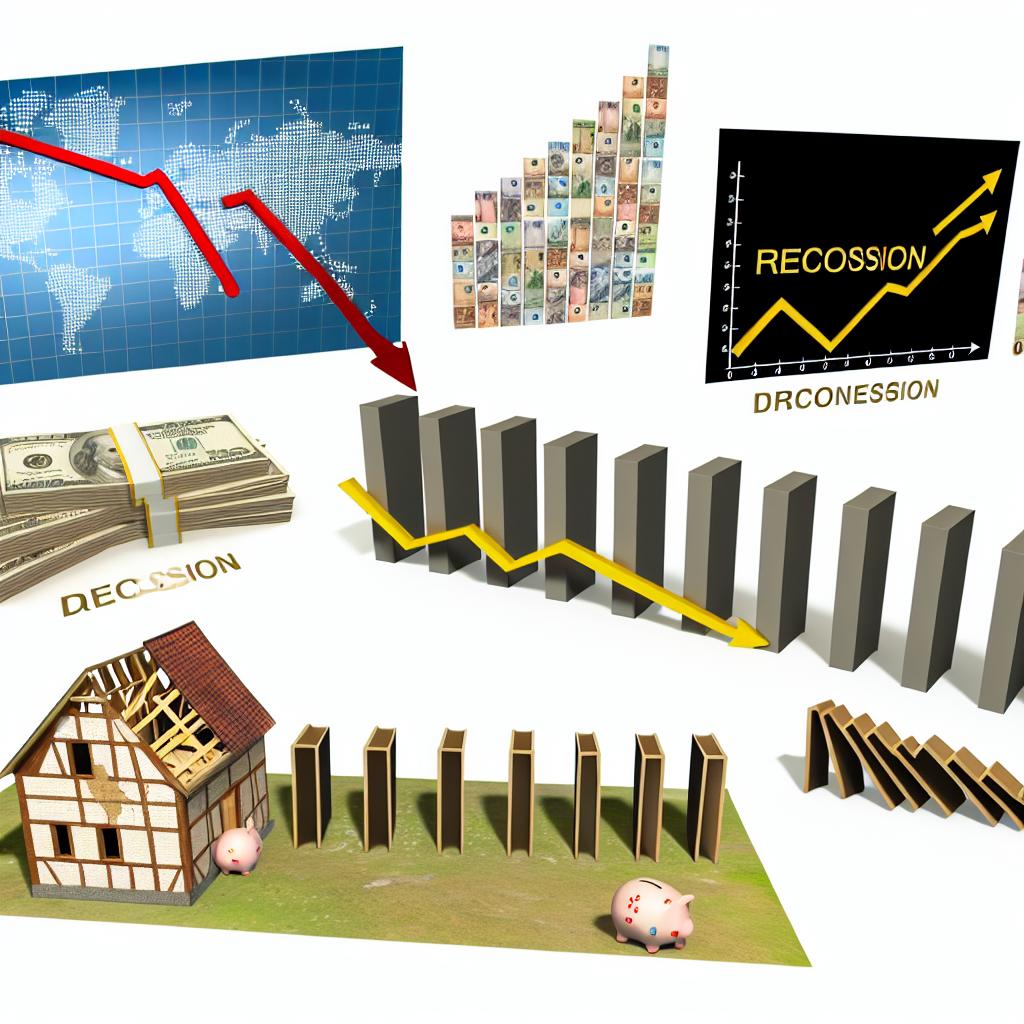
Understanding Economic Recession
Economic recessions are critical events that manifest as periods of negative economic growth, typically measured by a decline in real GDP over two consecutive quarters. The onset of a recession triggers a domino effect, impacting various pillars of society, such as employment rates, consumer spending, and business investments. Understanding the causes behind recessions can aid policymakers and economists in crafting strategies that mitigate their harmful effects and potentially prevent future occurrences.
Causes of Economic Recession
Recessions are multifaceted phenomena with no single cause; instead, they result from a confluence of factors that negatively affect the economic environment.
1. Decrease in Consumer Demand
Consumer demand is a significant driver of economic activity. When consumers become hesitant to spend, businesses experience dwindling sales, which then leads to lower production volumes. As companies grapple with this decreased demand, layoffs become prevalent, leading to reduced income for consumers—a cycle that perpetuates further economic decline. Various factors contribute to decreased consumer spending, including rising unemployment, inflationary pressures diminishing purchasing power, and general uncertainty about future economic conditions.
2. Financial Market Disruptions
The financial markets are indispensable to the functioning of a healthy economy, primarily by allocating resources and enabling businesses to access the capital required for growth and operations. However, disruptions in these markets, whether a stock market crash or a widespread banking crisis, can severely undermine investor confidence. When trust erodes, investors and lenders often retreat, leading to credit shortages and increased borrowing costs. Such conditions make it challenging for businesses to secure loans and invest in growth, exacerbating any existing economic woes.
3. Monetary Policy Missteps
Central banks wield substantial influence over the economy through their control of monetary policy tools, notably interest rates. However, missteps in monetary policy can precipitate or worsen economic imbalances. For instance, maintaining interest rates at excessively high levels may suppress borrowing and investment activities, stifling economic growth. Conversely, artificially low interest rates could lead to the formation of asset bubbles, which, if they burst, could destabilize financial markets and the broader economy.
4. External Shocks
External shocks, such as geopolitical tensions, natural disasters, or pandemics, represent disruptive events outside typical economic cycles. These shocks can have sweeping consequences, causing drastic declines in economic output and disrupting trade and investment patterns. As these shocks unravel, they often alter consumer consumption habits and business strategies, sometimes leading to long-lasting changes in economic behavior.
Addressing Economic Recession
In response to the challenges posed by a recession, governments and central banks frequently resort to an array of fiscal and monetary policy measures to stabilize the economy.
Fiscal Policy involves government actions adjusting tax rates and public spending to influence economic activity. During a recession, a government might decide to decrease taxes or increase public spending to stimulate demand and propel economic activity. Such measures can create jobs and increase disposable income, thereby encouraging consumer spending.
Monetary Policy, managed by central banking institutions, primarily involves manipulating interest rates and regulating the money supply. For instance, reducing interest rates can lower borrowing costs, encouraging investment and consumer spending. At the same time, expanding the money supply can increase the availability of funds for businesses and consumers.
Besides these primary strategies, governments and central banks also explore other unconventional monetary tools, such as quantitative easing, which involves the purchase of government securities to inject liquidity into the economy.
In managing and preempting recessions, it is vital for policymakers to thoroughly comprehend the interplay of various causative factors—consumer demand fluctuations, financial market dynamics, monetary policies, and external events. A deep understanding allows for the implementation of nuanced policies that adequately address the multifarious aspects contributing to economic downturns.
For more detailed information and further exploration of these strategies, you might consider looking into renowned resources on financial stability and comprehensive overviews on fiscal policy tools.
In summary, understanding the cause and effect relationships inherent in economic recessions is imperative for devising effective measures aimed at prevention and mitigation. By examining the ecosystem interlinking consumer patterns, financial market forces, monetary strategies, and external factors, decision-makers can preemptively bolster the resilience of economies against potential and emergent challenges, paving the way for more enduring economic stability.

